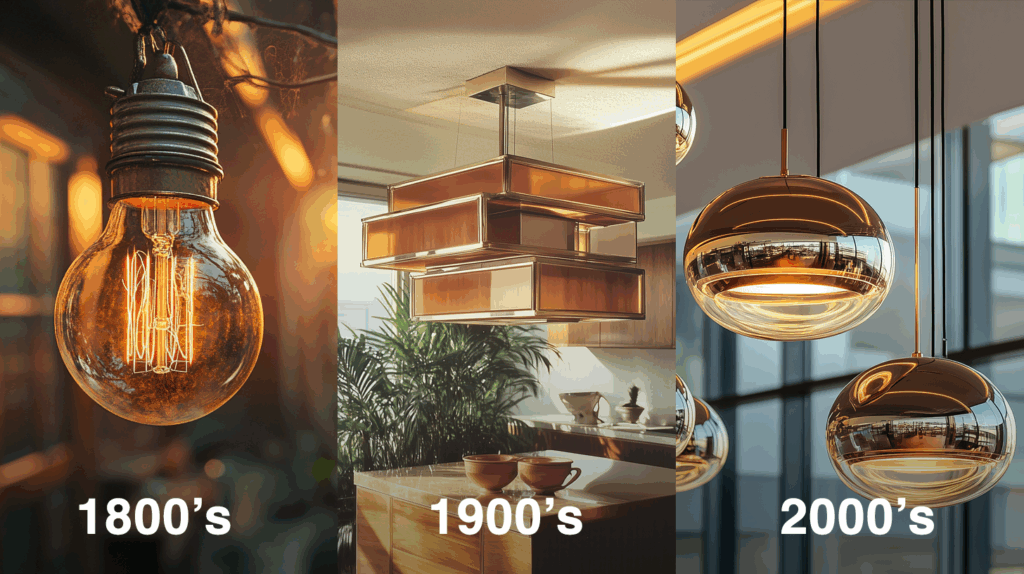Lighting Technology Timeline – History Of Lighting From 1800’s To Now May 19, 2025 – Posted in: Lighting Information

From the flickering glow of gas lamps to sleek, app-controlled LEDs, the story of lighting technology mirrors our relentless pursuit of innovation and comfort. Starting in the early 1800s, cities came alive at night under gas lamps, casting a warm yet uneven glow along cobblestone streets. These lamps, revolutionary at their time, were nonetheless cumbersome and limited by their reliance on gas lines and regular manual maintenance.
Everything changed profoundly when Thomas Edison invented the practical incandescent bulb in 1879. Suddenly, homes were filled with consistent, controllable light, changing domestic life forever. Incandescent bulbs were not just a source of light; they symbolized progress, offering safer, cleaner, and more reliable illumination. Yet, despite their popularity, these bulbs were energy-intensive, converting only a fraction of consumed energy into visible light.
In response to energy inefficiencies, the mid-20th century introduced fluorescent lights, notable for their distinct cool brightness and efficiency. Offices, schools, and industrial spaces quickly adopted fluorescent lighting for its cost-saving attributes, though its harsh, flickering output sometimes drew criticism for its negative impact on mood and comfort.
The late 20th century sparked another leap with compact fluorescent lamps (CFLs), smaller and suitable for household fixtures. Despite their energy-saving advantages, CFLs faced resistance due to slow startup times, poor color rendering, and mercury disposal concerns.
Enter the 21st century and the rise of LED technology. LEDs, offering unmatched efficiency, longevity, and adaptability, have transformed the lighting industry. Today, LED lighting is ubiquitous—found in homes, cars, streetlights, and even integrated into architecture as mood-enhancing design elements. With smart LEDs, users can now control brightness, color temperature, and even mood settings directly from smartphones.
The Illuminated Path: A Lighting Technology Timeline
I have been the project manager for Modern.Place since early 2016, spending three of those years working overseas on the manufacturing & procurement side of the LED lighting industry. Constantly learning and passing on knowledge to others while excited for what the lighting industry will involve into next.

